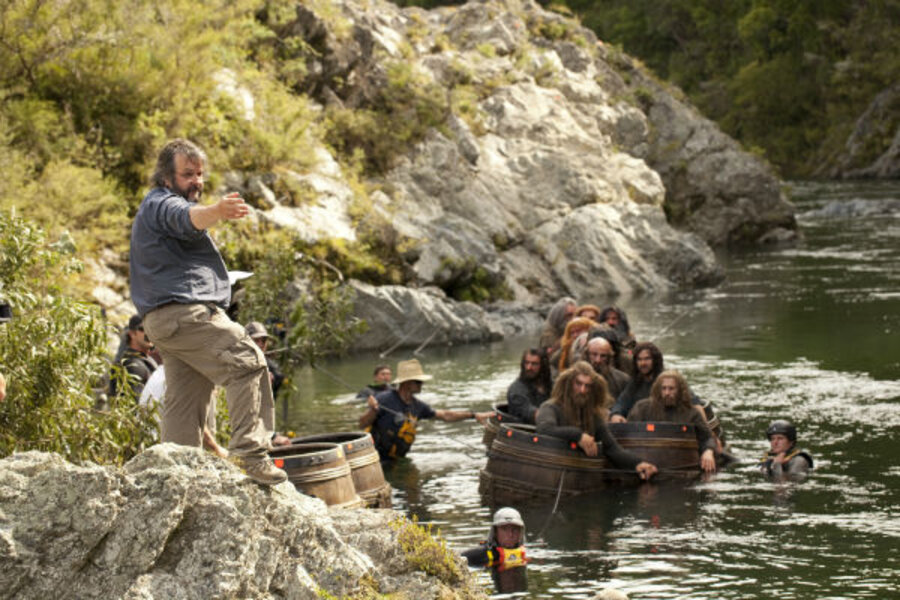'Hobbit' sequel grows family's love of Tolkien books
Loading...
Parents who grew up with a Hobbit habit get to share the love of their literary lives with family this weekend by taking the next generation to the latest installment of the J.R.R. Tolkien classic, “The Hobbit: The Desolation of Smaug.”
A reminder to kids and parents, beyond this point there be dragons. Of course, it may take a few tries to get today’s young fans who haven’t yet read the book to name that dragon correctly.
“It’s Smaug, not the Los Angeles stuff that comes from too many cars,” son Ian, 18, said in frustration to younger brother, Quin, 10. “Think, ‘shock and awe,’ like ‘Smaug is awesome and terrible.’”
The thing about a book like “The Hobbit” is that no matter how many times you read the book, you just can’t resist the opportunity to see the dragon come to life and hear his deep, dark voice.
The original cartoon film featured the unforgettable Richard Boone as the voice of Smaug and Orson Bean as Hobbit Bilbo Baggins. All my kids watched that film, just as I did, and like me they still sing the songs from it.
In fact, Ian, 18, would not pronounce the first Hobbit film of the trilogy a winner until he’d heard the “Misty Mountains” song lyrics by J.R.R. Tolkien music composed by David Donaldson, David Long, Steve Roche, and Janet Roddick performed in the film.
“As soon as the song started I knew this was going to be fantastic,” Ian said at the time. “It just transports you.”
That’s what these books do for both children and adults, provide transportation to another time and place that can be eternally shared.
It is a place of honor, misfortune, heroism, darkness, light, puzzles, humor, and wonder that stands through time, generation gaps, video games, and social changes.
When I was a child, I read “The Hobbit” and “Lord of the Rings” books so many times the bindings gave way and I would occasionally have to chase one of the thin pages as it tried to flutter away on fairy wings.
I wanted so badly to have my sons find the joy and solace of these good books that when they pronounced the Tolkien books “too big” to attempt, I devised a plan worthy of Gandalf the white wizard himself.
My approach became to read one of my old favorites aloud to the boys while they ate popcorn or some other treat. I would always get them right up to some gripping point at which I would suddenly have to go do a very long string of errands, make phone calls, and do laundry.
Each and every time the boys would proceed to weaken from curiosity and take over the reading themselves.
Any time they faltered, I would go back to reading aloud and then use the same bait and switch tactic.
With my youngest, I find an eReader to be the best tool for reading because he gets into the book and never, ever sees how long it is. That old Kindle stays the exact same thickness weather he’s reading Dr. Seuss or War and Peace.
No matter how you do it, via read-aloud, Kindle, or going to the film first for motivation, it is vital to share your favorite books with your kids.
When it comes to finding ways to get kids to read and making storytelling a family tradition, we can again turn to Tolkien, who wrote in “The Hobbit,” “There is nothing like looking, if you want to find something.”








